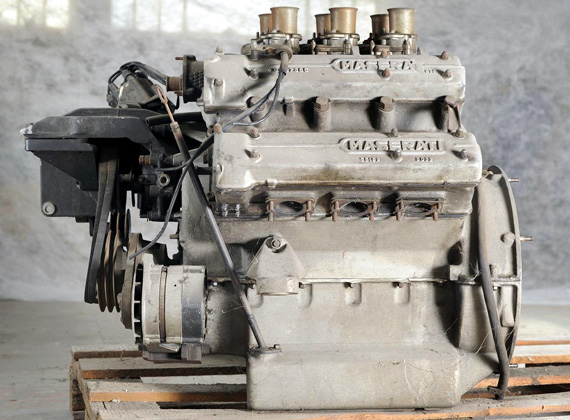
This is the V8 minus 2 cylinders, which Maserati cut and used in-house for internal study in the late sixties before starting with a clean sheet of paper for the actual SM engine. You can recognize that it is off a traditional Maserati V8 because the chain is at one end of the block whereas in the SM engine the chain is in the middle. This one-off prototype engine had never been seen before and was at the root of countless misunderstandings for decades.
Review by Wallace Wyss
If ever there was a “forgotten era” of GT cars it is the era from 1968 through 1975 when Maserati, one of Italy’s premier GT car builders, went through a number of dire changes.
Basically the Italian firm was bought by Citroen and then, seven years later, sold off to De Tomaso who had become enriched by selling Ghia to Ford while simultaneously supplying the Pantera to Ford. Plus De Tomaso had government help in buying Maserati because the Italian government was anxious to save jobs.
Sonnery, a French-Swedish writer, really loves his subject, that’s evident. The book is written in an unusual way—some of the passages are his own researched views of what happened, but about half of the book consists of interviews of the various participants on both sides; the Italians and the French, plus a few Americans like George Garbutt who was in charge of the importation of Maseratis out of Baltimore. Some of the interview subjects contradict the others but it makes fun reading to see how different people saw the same occurrence from a different view. Many of the people Sonnery interviewed over the years have since passed on, so this book offers valuable insight into what happened, or in the cases of various mistakes, who to point the finger at.
The book covers some magnificent cars: the Bora, the Merak, the Khamsin, the Citroen SM, and even the Maserati-engined Ligier.
This writer, who tested both the Bora and the Merak when new, and had trouble with both (the Bora overheating, the Merak brakes locking up), learned a lot from this book, the biggest surprise being that the Merak used the Bora body with some body mods (flying buttress roof) when I always thought the Merak was smaller because of the smaller engine.
Sonnery goes into the sacrifices Maserati had to make in styling to meet the onerous US bumper laws. Surprisingly he approves of the removal of the big US bumpers by today’s owners of the cars and retrofitting Euro bumpers to cars sent to the US for aesthetic reasons.
A very interesting section is devoted to the Bora Le Mans car, two of which were made but never entered because Sonnery says Citroen wouldn’t let Maserati lie about how many were made (500 would have had to be made to homologate it.)
One of the most interesting interviews is of Marcello Gandini about the Khamsin—he too was horrified when he first came across one of his cars with the American bumper—a bumper done without his knowledge.
The most educational part of his book is the many examples of how difficult it was to mesh the Italian way with the French way. According to Sonnery, the Italians would just fettle a car and make it right, while the French would have a lot of paperwork going back and forth before something could be done to fix a problem in a car.
Sonnery praises the odd choices of having very quick steering on the Citroen SM and Khamsin, and easy to over-apply brakes on those models, because overall, once you get used to them, they ease driving effort. He write of one example of a press preview where several reporters are driving the car through a gate for their driving session, but hit the gate. Maserati might have assumed too much that drivers would get used to it quickly.
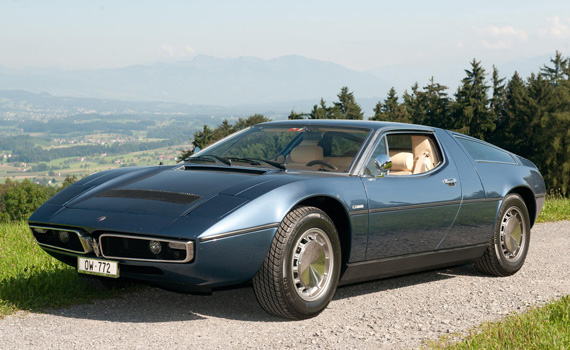
The Bora, shown above, used the traditional Maserati V-8; the Merak used the same body/chassis but with the V6.
Normally car books don’t have “villains” per se but in this book Ing. Alfieri comes across not so much a villain as a man who is in over his head. He started on the Maserati Bora, Merak, Khamsin, etc., just as cars were becoming more complicated as a result of having to meet US emissions laws, safety bumpers, and so on. One man couldn’t do everything as in the old days.
Painted much more darkly is Guerrino Bertocchi, the old test driver who had already been with Maserati for decades when these new generation cars came along. He is accused of stealing parts, recommending customers go to De Tomaso and other charges that make you wonder how unaware the previous management must have been if they didn’t realize they had a viper in their nest? He was fired by Citroen.
De Tomaso is wearing the “most evil villain” sign in the book, a portrait with which this author can agree, having authored three books on the wily Argentinian (nevertheless De Tomaso will be the subject of Sonnery’s next book!)
Sonnery really departs from the history format by going into problems with old cars and their individual restoration problems, even pictures of rust, etc. I think a history book doesn’t need these “how to fix” sections unless of course he thinks Maseratis–built-during-the-Citroen-era fans might not buy more than one book on the subject so they need all the info in one book.
Sonnery is shocking in his evaluation of previous models, such as remarking the Ghibli and Indy “had no brakes.” He even quotes various Maserati officials admitting this.
Overall the book praises the advanced Citroen hydraulic systems that make many old car buffs shy away from cars of this era but he labors to point out that, when properly maintained, the systems can last for years.
Americans were just not used to the green fluid and how to maintain such cars. I am sure Sonnery’s argument would apply; if you are buying any precision-made product from a Nikon camera to a Krieghoff shotgun, you owe it to yourself to maintain it as per manufacturer’s recommendations. The fact is Americans didn’t maintain the cars so they got a bad rep.
Sonnery devotes several pages to one-offs, like the Khamsin Spyder, and I can defend these “customs” belonging in such a book to show readers what direction an automaker could have gone if they had the budget for additional models.
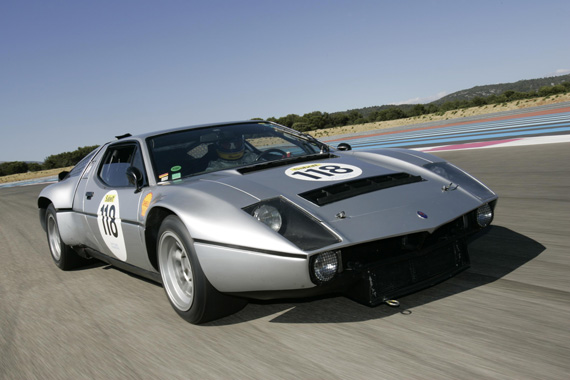
Built for the GT class at the 1973 Le Mans, the Bora Group 4 showed promise but the project dead ended.
In the past I have noticed an uptick in the value of certain cars once there is a comprehensive book on that model, say the Daytona book done by Braden and Roush. Now we will see if this book, by itself (and there are no others covering this subject) does that with the Citroen-era Maseratis. I think it will, but Sonnery has to overcome a lot of prejudice built up about the cars which, even in his book were portrayed as being produced under what you would have to call “battle conditions”, with national prides being conflicted over what way to go…and the quality of the product suffering as a result.
This book is not only a loving appreciation of the engineering and styling of a number of Maseratis, but a political and historical document as well.
The printing is very good, and the reproduction of historical styling drawings, clay model shots, prototype shots and the like are appreciated. So many car books leave out these harder-to-find pictures. Overall, I’d say this 500-plus page hardbound tome is worth the money, but I’d have to know a mechanic very familiar with Citroen hydraulics before I’d even think of owning one of these cars.
WHERE TO BUY IT: EAU ROUGE Publishing
Read Interview with Marc Sonnerey
THE CRITIC: Wyss is the author of Incredible Barn Finds, Vol. 1, launching in August from Iconographix.

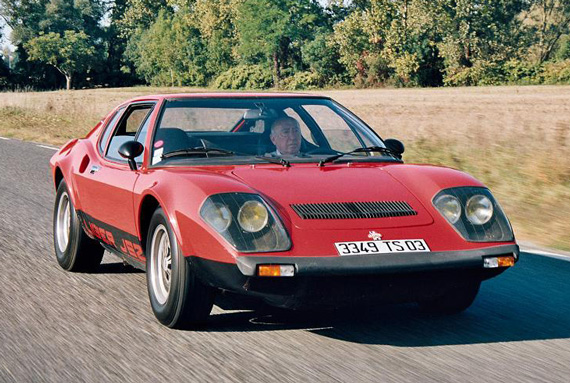

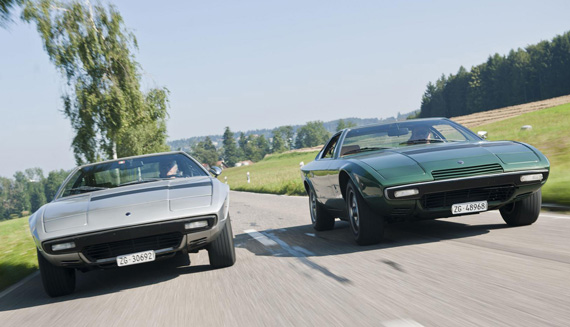
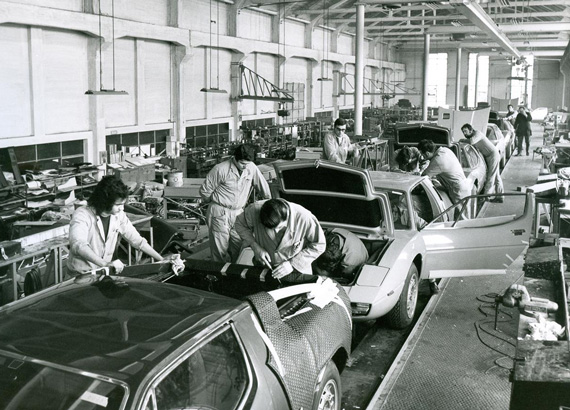
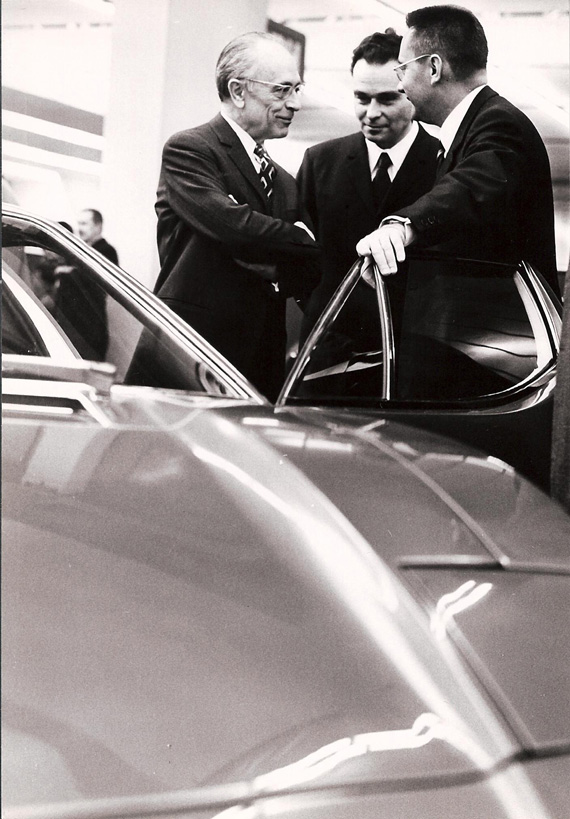
Dear Mr. Wyss, Your closing comment about your fear of owning one of these cars because of the Citroen Hydraulics is the type of ignorance that writers have kept the buying public away from these cars all these years. And it is most always from people like yourself who have never owned or driven one . As a long turm owner of a Bora I have found the car as trouble free as a modern car. With the high maintainance of Ferraris and Lamborghinis ,your fear is unjustified. Robert.
In my estimation the SM Citroen-Maserati represents the absolute Nadir of the Maserati lineage. A local friend had one of these as well as a Quattroporte. The only thing that worked on the SM was the dashboard clock.
I owned and maintained an SM for a number of years. The hydraulics were not much of an issue .I changed the water pump and chains with the engine in the car, and that was a challenge. I put a new braking sphere on and did some brake work that wasn’t any more problematic than any brake system can be. My biggest problem turned out to be the English Borgward auto trans that had been repaired before I bought the car for more than I paid the owner and which became a two speed instead of a three speed much too soon. I had hopes of converting to a five speed, but values and time negated that project. I sold it to a new owner in Germany.
SM’s Of course the quote of the Dashboard Clock working…Typical…probably
German and/or English car fan…That’s OK. The Citroen suspension system had been used for years on Rolls Royce and Mercedes Benz….Now why did they do that…tsh, tsh. Since l955 Citroens’ hydraulic system, that the shifting, steering, clutch, brakes and suspension on one system….made over a millon cars with it….strange that it not a workable system as some say….terrible, dumb French
someone hit the gate because the brakes were TOO sensitive? or were they just afraid of pushing that footbutton too hard? I had a Bora for a year or so and it never overheated. My sister’s Indy’s brakes were just fine (never took the car on the track; it was an automatic) but for lousy brakes I recommend the Miura first series. Maybe 2 laps on a road course, and then nothing. Fine on the road, though. And why would anyone be shocked by substituting European bumpers for American ones? Remember, Mister Bentley hissownself said cars should be built without bumpers because they encouraged careless parking!
Jerry Lehrer June 27, 2013 at 3:00 pm said :
In my estimation the SM Citroen-Maserati represents the absolute Nadir of the Maserati lineage. A local friend had one of these as well as a Quattroporte. The only thing that worked on the SM was the dashboard clock.
Have to disagree !…Citroen sold Maserati to De Tomaso and they produced the BiTurbo. I owned one of these for a few years and I don’t think ever everything worked at the same time.
I read that line in the book “over a million cars with that system” but I think the Americans aren’t used to cars that require a special bilious green fluid (have you tried to order it at our neighborhood auto parts store?) and if you use the wrong fluid it ruins the system. I think the author was trying to say “if maintained properly, they can be great cars” but many buying these cars second or third hand were buying cars not maintained properly and couldn’t find mechanics to properly service and maintain them which is why their reputation suffered. As to the fellow who says I never drove one, I as a matter of fact have test driven hundreds of cars in 47 years of motoring writing, including a Bora (which over-heated) a Merak (whose brakes locked up) and a Khamsin. So it ain’t my first rodeo, so to speak.
As far as the bumpers, going back to those concours judges with their little score sheets on clipboards, shouldn’t they deduct points from a made for U.S.A U.S. spec. car that’s been retrofitted with Euro bumpers? (Now ya know why I don’t like being a concours judge…)
I’m truly shocked at the low level of knowledge, insight, understanding and respect displayed in many of the comments here. So many seemed much more concerned with seeing their words on a screen than in actually parting some info or experience. Did someone actually post that one can’t get Citroen hydraulic fluid at the neighbor heed auto parts store? That’s too low a level for Rod and Custom.
Gary,
the gearbox was made by BorgWarner,a US company;Borgward was a German car builder in Bremen,went bust in the early sixties.SM’s are great cars but hard to work on although I knew of at least one mechanic who relished the prospect of adding aircon to an SM in Belgium.
I am a friend of Marc Sonnery’s and continue to be impressed by his industry to present lesser-known Maseratis to the collecting public. He is also the registrar for the Khamsin Registry. I am also a long-term owner of a Merak SS which model dispensed with all things Citroen (except the transmission, also used by a couple of generations of Loti). I have found the Merak to be superior in many ways to its competitors, namely the Ferrari 308 (better ergonomics, an engine that actually puts out torque) and the Lamborghini Urraco (beautiful car, sounds great but 2 1/2 litre versions are dogs). I have driven the Merak all over the western US, would not hesitate to drive it ACROSS the country. Rubber bumpers are not the greatest thing, but were fairly well integrated into the car for all that. It’s an ‘orphan’ car that potential buyers should not shy away from, especially the post 1975 SS models. With prices still under $30K in many cases, it’s a sleeper and VERY good value for a good handling, comfortable GT car that will return 22 mpg on freeway driving.
First of all, many thanks for the book review on this era of Maserati’s. I am anxious to receive my copy.
Reading the various comments, perhaps I can give some perspective on a car (Bora) I’ve owned about 35 years and my experiences in maintaining the somewhat infamous hydralic system during this time.
I can fully understand the negative comments, and the positive ones, but maybe having some history on the development of the system may bring the two groups closer to the middle.
As most know reading this site, Citroen developed a most remarkable car in 1955 in the DS 19. A few years before (1952) it developed the first extreme pressure hydralic system for the Traction Avant, but it was the DS19 that put it on the map. The car was a spaceship and so was the system. Only one thing kept the advanced hydralics from balancing between famous and infamous…….the hydralic fluid. At the time, only a very hydroscopic fluid was available, and when it began to absorb moisture……..bad things happened.
Flash forward to the mid-1960’s and along came “Liquide Hydraulique Mineral” (LNH) and all of a sudden the system became what it should have always been………fantastic. Is it perfect? Certainly not, but it is very good and for old farts that enjoy something that is mechanically sophisticated, like me, it is really pretty cool.
In 35 years I have only replaced the pressure spheres (once). The sphere acts as a damper, with an inert gas on the top and high pressure LMH on the bottom, with a diaphram separating the two. The combination of the compressible gas and a variable pressure valve coupled to the pedal, are what give a progressive nature to the braking. This progression IS different than a traditional hydralic system in feel and does take some getting use to. Remember when “power brakes” came about in the ’50’s (well some of you do!), sort of the same thing….they took getting use to as well.
But just think of it, the pilot of a new triple 7 Boeing has basically the same system (and pressure, 2600psi) and he paid a bit more than your Bora.
I might add that for collectors that are not able to use their cars often enough (like me) the system is really fantastic. The traditional brake fluids (not silicone) will always absorb moisture and require periodic rebuilds if not used often enough, the Bora with LHM will last much longer.
The absolute authority on these systems in the US are Jerry and Silvia Hattaway at SM World in CA. I first ran into them at Bonneville many years ago. Silvia held a world record in class for decades in a supercharged SM that Jerry built. Super people.
So buy a Bora before Marc’s book turns the hobby on to what a few of us have known for a long time……a fantastic GT car with a sophisticated braking system!
I have owned a Bora for 13 years now, about the only real headache were the hydraulic cylinders for raising the headlights. These are unobtainable now (a Bosch part originally used on the Grosser Mercedes), they are held together with a eurathane glue which must be heated to take them apart. I sent mine to TOP HYDRAULICS in America to a Klaus Witte who made the seals for them. I have rebuilt the Bora engine and the gearbox together with various other areas of the car (electrical, shockabsorbers etc) myself and I can truly say Maserati cars of this vintage are built to last, they are put together with quality materials and lot of thought as to how they are constructed. Bora’s can overheat on hot days in stop start traffic as do many vehicles in that situation, however after my engine rebuild a friend and I took it for a long drive 200 miles or so in 40 degree heat back in 2004 and it did not throw out any water for the whole trip. An easy modification is to add a Davies Craig electric to the return coolant line, I did this recently and the temp dropped some 10 degrees or so, well worth doing. I can’t wait to read Marc’s book and add it to my vast collection of Maserati books. I also agree as to the Bora being undervalued, it is far more easy to own then most exotics of this nature and the time has come for them to be fully appreciated. Regards Ken Graham.
I acquired two used SM some 40 years ago and I still use the one I put together from those two birds. The only thing I changed in the engine was the exhaust valves. Dump the sodium filled ones and install solid stainless valves. The hydraulics never were a problem, aside from the drag of recharging the spheres every ten or so years, as long as I don’t try to run it on cooking oil or chicken fat. The car is a delight to drive. It goes where I steer it – no need to aim it and hope for the best. It stops so well that I have to watch the primitive braking car behind me. I don’t have to slow down for turns, wet roads, RR crossings or potholes. Yes, the dash clock is not working… since 1973. The only restriction is driving on ice. It is very good on snow thanks to the suspension allowing the tire to climb on the snow, rather than pushing a dam, or wedge of slush ahead of the tire. Comfort? Don’t get me started on that.